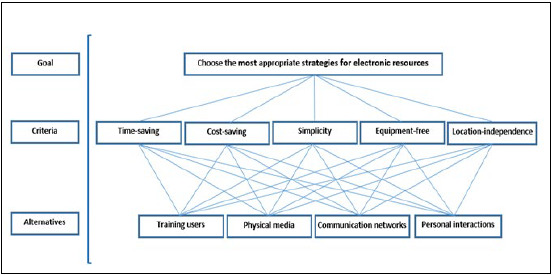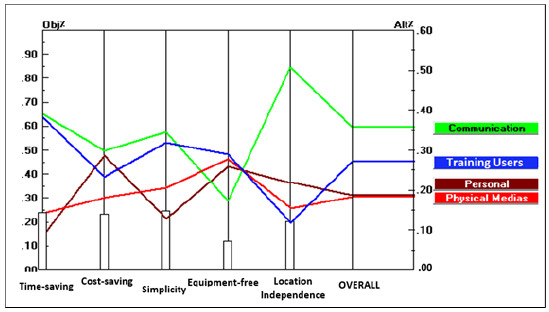Marketing methods for electronic resources in medical libraries: a study on the application of the analytical hierarchy process.
IF 2.9
4区 医学
Q1 INFORMATION SCIENCE & LIBRARY SCIENCE
引用次数: 0
Abstract
Objective: Paired with the high cost of providing access to electronic resources in medical libraries, the inefficient use of these resources highlights the need for more efforts to promote these resources than ever before. In this study, electronic resource marketing methods were prioritized and the best strategies were determined using the analytical hierarchy process (AHP). Methods: Using an analytical survey of officials of medical libraries, the most common methods for marketing electronic resources in libraries were determined and divided into categories of strategies. Five important criteria for marketing strategies were also selected. Using the analytical hierarchy process, pairwise comparisons were performed between the alternatives (i.e., strategies), which were evaluated against the selected criteria. Data analysis was performed using Expert Choice 11 software. Results: A total of 44 electronic resource marketing methods were identified and categorized into 4 strategies. On average, 43.9% of these methods were used by the surveyed libraries. The analytical hierarchy process showed that simplicity was the most important criterion and that communication networks were the best electronic resource marketing strategy. Home/off-campus access, group training, library search stations, and marketing by individual librarians were the most preferred methods of marketing electronic resources. Conclusion: With the availability of a variety of different methods for marketing electronic resources, medical libraries must select strategies based on important criteria depending on the characteristics of the library, librarians, and users. Thus, the analytical hierarchy process can be an effective and practical solution to decision-making by mathematically prioritizing the selection of the best strategies from a set of alternatives based on differentially weighted criteria.



医学图书馆电子资源营销方法:层次分析法的应用研究。
目的:结合医学图书馆电子资源的高成本提供,这些资源的低效率利用突出表明需要比以往更多的努力来促进这些资源。本研究采用层次分析法(AHP)对电子资源营销方法进行优先排序,并确定最佳策略。方法:通过对医学图书馆管理人员的分析调查,确定图书馆电子资源营销最常用的策略,并将策略分类。还选择了营销策略的五个重要标准。使用分析层次过程,两两比较之间的选择(即,策略),这是根据所选的标准进行评估。使用Expert Choice 11软件进行数据分析。结果:共识别出44种电子资源营销方法,并将其分为4种策略。被调查的图书馆平均使用了43.9%的方法。层次分析法表明,简单性是最重要的标准,传播网络是最佳的电子资源营销策略。家庭/校外访问、团体培训、图书馆检索站和图书馆员个人营销是最受欢迎的电子资源营销方法。结论:随着电子资源营销手段的多样化,医学图书馆必须根据图书馆、馆员和用户的特点,根据重要标准选择策略。因此,分析层次过程可以是一个有效的和实用的解决方案,通过数学优先级选择的最佳策略,从一组基于差分加权标准的备选方案。
本文章由计算机程序翻译,如有差异,请以英文原文为准。
求助全文
约1分钟内获得全文
求助全文
来源期刊

Journal of the Medical Library Association
INFORMATION SCIENCE & LIBRARY SCIENCE-
CiteScore
4.10
自引率
10.00%
发文量
39
审稿时长
26 weeks
期刊介绍:
The Journal of the Medical Library Association (JMLA) is an international, peer-reviewed journal published quarterly that aims to advance the practice and research knowledgebase of health sciences librarianship. The most current impact factor for the JMLA (from the 2007 edition of Journal Citation Reports) is 1.392.
 求助内容:
求助内容: 应助结果提醒方式:
应助结果提醒方式:


